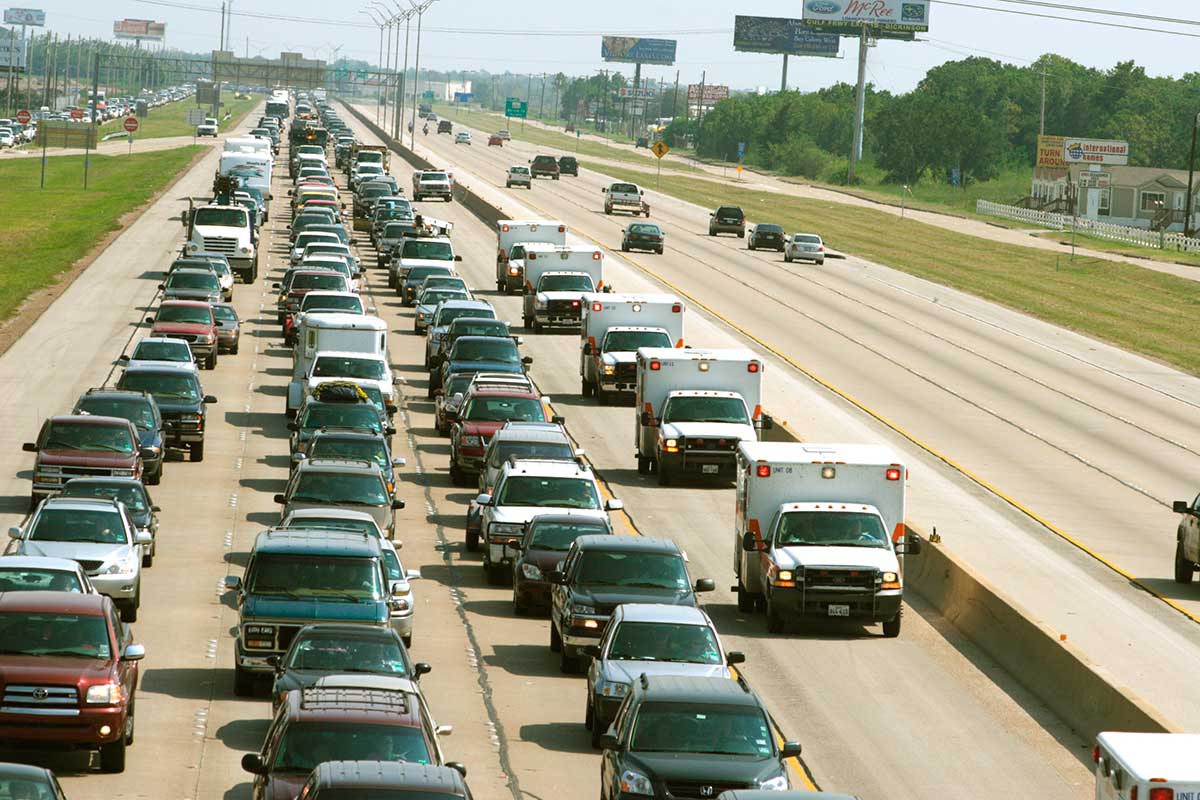
AC-120121-GB-5-800
In any disaster or crisis, whether natural or man-made, there are two basic options: shelter in place or evacuation. The goal in evacuation is to get to a place of safety. You not only need to know where you are but the route and alternate routes to get back to safety. You also need the right tools and most importantly know how to use them. Tools without training will do you little good.
THE GO BAG
EDC is simply what you carry every day. It’s what you have on your person. When you need to get out quickly in a time of crisis you need a Go Bag. A Go Bag is a small bag that’s designed to get you where you need to go. It’s mission essential task based and augments your EDC.
A Go Bag differs from a Bug Out Bag, although there’s a lot of crossover. In their simplest form both are designed to give you life support. A Go Bag commonly consists of a day or two of life support. A Bug Out Bag is designed to help you survive for a longer period of time. They’re typically larger, multi-day packs.
A Go Bag won’t do you any good if you can’t quickly grab it in an emergency. It needs to be easily accessible. Ideally you should have multiple Go Bags—one in your home, in your vehicle and at work. Each member of your household should have their own Go Bag. Go Bags should be updated regularly.
FINDING THE RIGHT BAG
Finding the right bag is almost as important as what you put into it. You have a variety of options, including a backpack, sling bag, satchel or messenger bag. There are advantages and disadvantages to each type that you need to take into consideration.
A backpack more evenly distributes weight on the shoulders for comfort and is easier to run with. A sling bag, satchel or messenger bag is ideal for confined spaces, quick access to contents, crowds and driving—simply swing it around to your front.
The pack or bag should be lightweight enough to easily and comfortably carry, but large enough to carry what you need. It should be water-resistant and durable. Don’t scrimp on quality. Your life may be at stake.
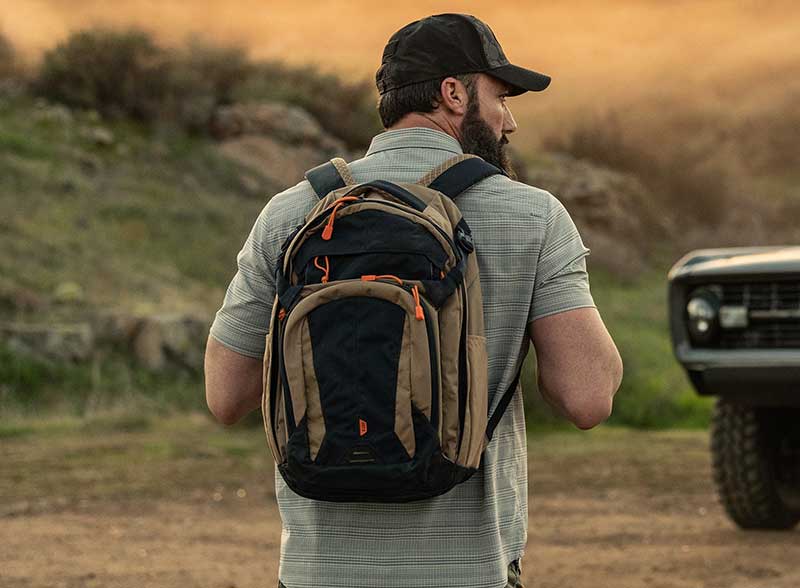
A backpack more evenly distributes weight on the shoulders for comfort and is easier to run with. 5.11 COVRT18 2.0 backpack shown.
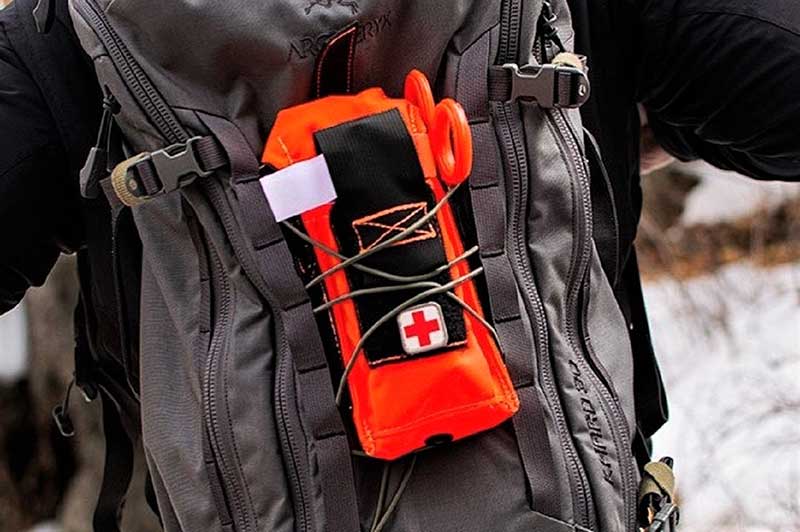
EMS will likely be delayed or unavailable in a crisis situation. A minor first aid kit has more “comfort care” items for situations that aren’t life-threatening. A major first aid is designed for injuries which require immediate action be taken in order to preserve life. Dark Angel Medical D.A.R.K. Trauma Kit shown.
WHAT TO INCLUDE
What should go into a Go Bag? Although there are some basics, the needs of everyone will differ. Situations are unique. Commonsense should always prevail.
In setting up your Go Bag you must consider your needs, skills and situation. Keep it practical. For example, the setup of the Go Bag that you keep at home will likely differ from the Go Bag that you take with you when you are traveling. It’s not one size fits all. When deciding what to carry, keep in mind that mobility equals survival. Size and weight do matter.
You need to consider a variety of factors when deciding what you should carry. These include how long it’s going to take you to get to safety and the distance, potential threats and other hazards, the environment, weather conditions, your level of physical fitness, your capabilities, as well as any special needs that you may have.
THE RULE OF THREES
The Rule of Threes is a rule of thumb involving the priorities to survive. Although it’s a generalization rather than scientifically accurate, it‘s a useful tool that allows people to effectively prepare for emergencies. It can also help you make decisions in a survival situation. The Rule of Threes states the following:
• You can survive three minutes without breathable air (or in icy water).
• You can survive three hours in a harsh environment (extreme heat or cold).
• You can survive three days without drinkable water.
• You can survive three weeks without food.
After these priorities are met, pack your Go Bag with what you think will be beneficial to you. Every situation is unique.
SOME BASICS
What should go in your Go Bag? You likely need look no further than your local emergency management agency for suggestions. Here’s the Go Bag checklist from the Maricopa County Department of Emergency Management in Arizona:
• Battery-operated AM/FM radio and extra batteries.
• Bottled water and light-weight, non-perishable food such as energy and/or granola bars.
• Change of clothes; sturdy, comfortable shoes; lightweight rain gear; coat and blanket.
• Child care supplies (diapers, wipes, food, formula) or other special care items.
• Contact and meeting place information for your family, and a small regional map.
• Copies of your important documents in a waterproof and portable container (insurance cards, photo IDs, proof of address, copies of prescriptions, etc.).
• Credit/Debit cards and at least $50-$100 in cash in small denominations.
• Extra set of car and house keys.
• First-aid kit including bandages and antibiotic ointments.
• Flashlight and extra batteries.
Mask
• Medications and other essential personal items; be sure to refill medications before they expire. Keep a list of the medications each member of your family takes, why they take them, and their dosages
Other items to include depend on your situation and the type of emergency that you are preparing for. A cell phone is essential along with spare chargers for electronic devices. A multi-tool is always helpful. Don’t neglect self-defense either.
If a firearm is part of your EDC, make certain you have additional magazines/ammunition with you. If you’re in a restrictive jurisdiction that prohibits most weapons you still have options. For example, a dry powder fire extinguisher can be employed as a crowd control tool to create space. And, of course, it can also be used to put out fires.
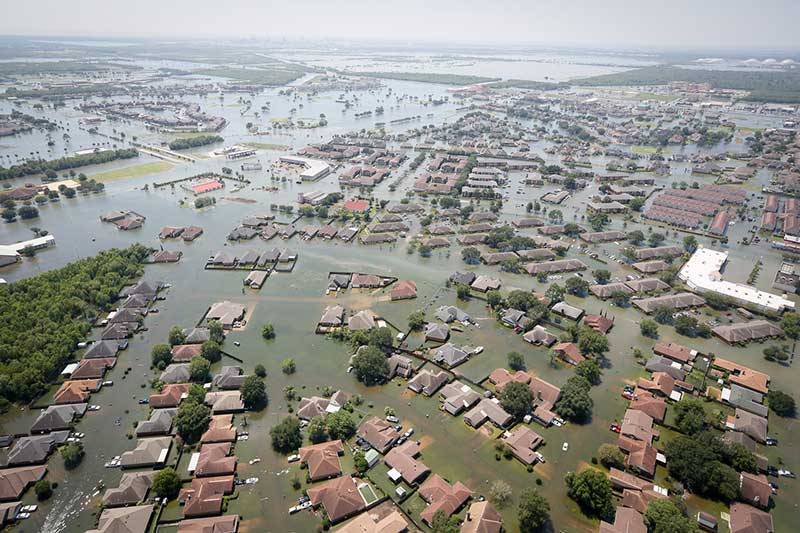
Flooding in Port Arthur, Texas after Hurricane Harvey in 2017. In any disaster or crisis there are two basic options: shelter in place or evacuation. The goal in evacuation is to get to a place of safety. A Go Bag is designed to get you where you need to go.

EMS will likely be delayed or unavailable in a crisis situation. A minor first aid kit has more “comfort care” items for situations that aren’t life-threatening. A major first aid is designed for injuries which require immediate action be taken in order to preserve life. Dark Angel Medical D.A.R.K. Trauma Kit shown.
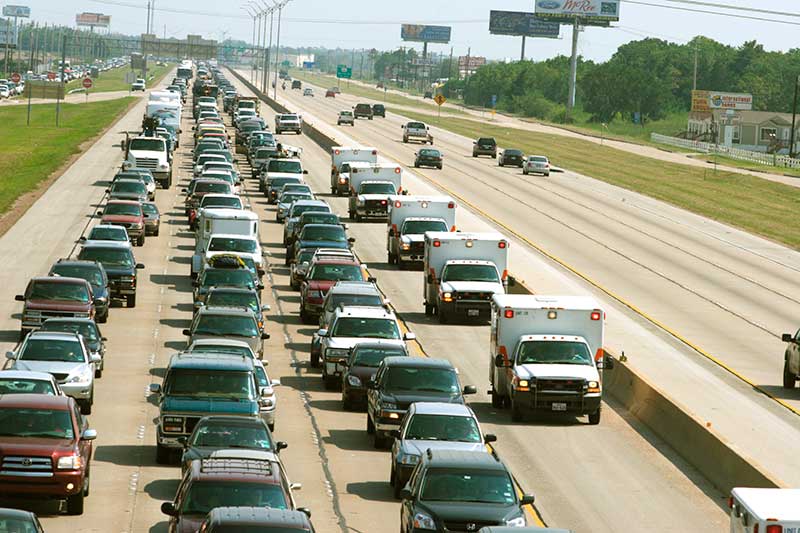
Evacuees on Interstate 45 leaving Galveston, through Houston, during Hurricane Rita in 2005. Emergency evacuation plans are developed to ensure the safest and most efficient evacuation time of all expected residents of a structure, city, or region.
PACKING THE GO BAG
The Go Bag should be prepacked with all of your gear so that you can hastily grab it and go in an emergency. How you pack your bag is important. Supplies should be organized for accessibility, distributed by weight and compartmentalized by group. You want a solid stable load. Bags differ in what they provide, which needs to be taken into consideration.
There are four simple rules that you should follow when packing your Go Bag:
The heaviest gear goes close to your back.
Light gear goes to the front.
Less used items go on the bottom.
Frequently used items go on top or in accessory pockets.
Regularly double-check to ensure everything in your Go Bag is working properly. Check expiration dates. Ensure you have enough batteries and/or chargers. Failure is not an option.
SUMMING UP
Having an emergency Go Bag could save your life. The time to prepare a Go Bag is before you need it. Putting together a Go Bag is relatively simple and won’t break the bank. But it does take some thought.
When putting together a Go Bag it’s essential to consider the potential threats, the environment and your capabilities. And don’t forget to let commonsense prevail in your decisions.
Stay smart and stay safe.














